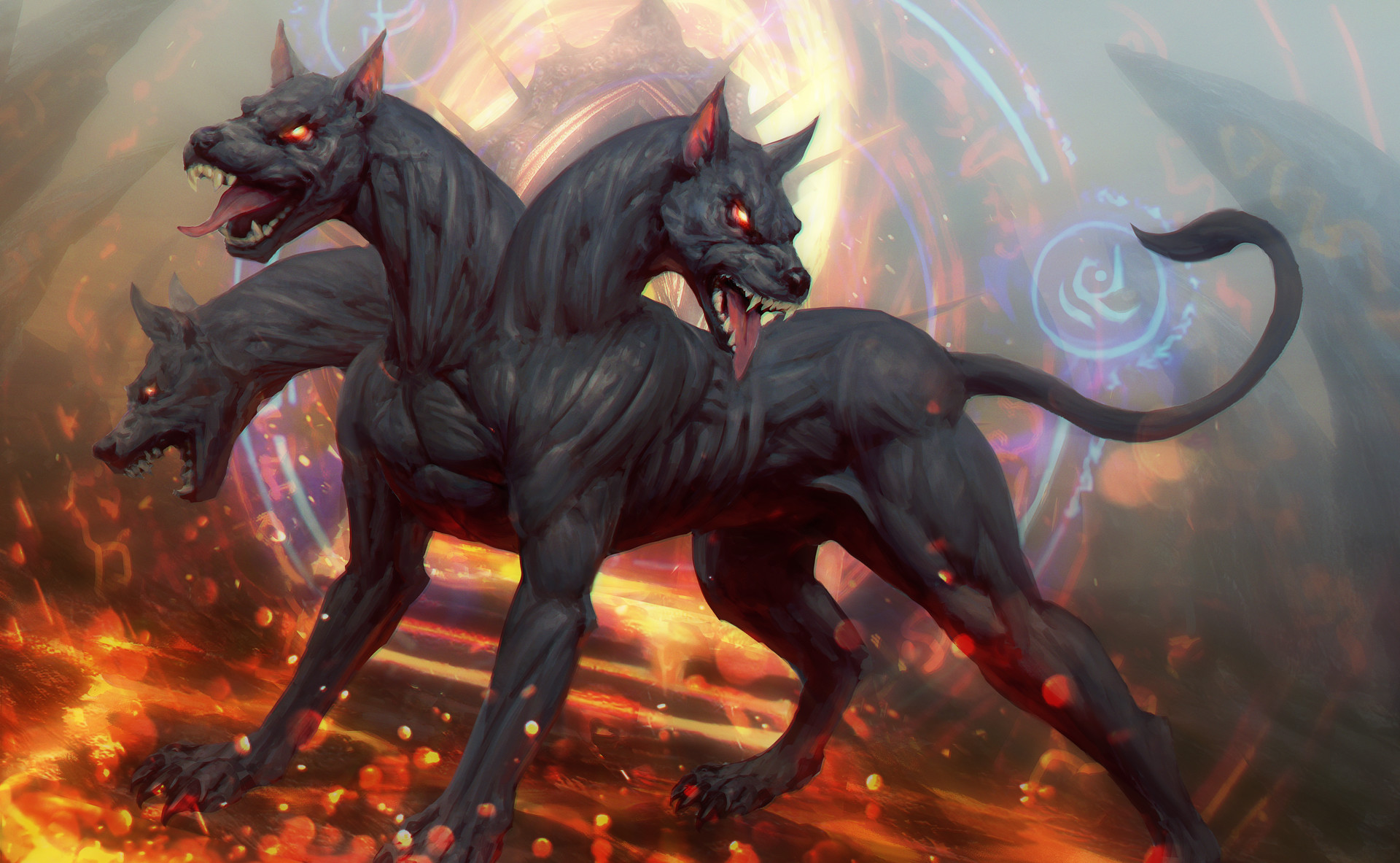Hello ladies and gents this is the Viking telling you that today we are talking about
Cerberus
In Greek mythology, Cerberus, often referred to as the hound of Hades, is a multi-headed dog that guards the gates of the Underworld to prevent the dead from leaving. He was the offspring of the monsters Echidna and Typhon, and was usually described as having three heads, a serpent for a tail, and snakes protruding from multiple parts of his body. Cerberus is primarily known for his capture by Heracles, one of Heracles' twelve labours.
Descriptions of Cerberus vary, including the number of his heads. Cerberus was usually three-headed, though not always. Cerberus had several multi-headed relatives. His father was the multi snake-headed Typhon, and Cerberus was the brother of three other multi-headed monsters, the multi-snake-headed Lernaean Hydra; Orthrus, the two-headed dog who guarded the Cattle of Geryon; and the Chimera, who had three heads: that of a lion, a goat, and a snake. And, like these close relatives, Cerberus was, with only the rare iconographic exception, multi-headed.
In the earliest description of Cerberus, Hesiod's Theogony (c. 8th – 7th century BC), Cerberus has fifty heads, while Pindar (c. 522 – c. 443 BC) gave him one hundred heads. However, later writers almost universally give Cerberus three heads. An exception is the Latin poet Horace's Cerberus which has a single dog head, and one hundred snake heads.
Perhaps trying to reconcile these competing traditions, Apollodorus's Cerberus has three dog heads and the heads of "all sorts of snakes" along his back, while the Byzantine poet John Tzetzes (who probably based his account on Apollodorus) gives Cerberus fifty heads, three of which were dog heads, the rest being the "heads of other beasts of all sorts".
Horace's many snake-headed Cerberus followed a long tradition of Cerberus being part snake. This is perhaps already implied as early as in Hesiod's Theogony, where Cerberus' mother is the half-snake Echidna, and his father the snake-headed Typhon. In art Cerberus is often shown as being part snake, for example the lost Corinthian cup showed snakes protruding from Cerberus' body, while the mid sixth-century BC Laconian cup gives Cerberus a snake for a tail.
In the literary record, the first certain indication of Cerberus' serpentine nature comes from the rationalized account of Hecataeus of Miletus (fl. 500–494 BC), who makes Cerberus a large poisonous snake. Plato refers to Cerberus' composite nature, and Euphorion of Chalcis (3rd century BC) describes Cerberus as having multiple snake tails, and presumably in connection to his serpentine nature, associates Cerberus with the creation of the poisonous aconite plant.
Virgil has snakes writhe around Cerberus' neck, Ovid's Cerberus has a venomous mouth,[ necks "vile with snakes", and "hair inwoven with the threatening snake", while Seneca gives Cerberus a mane consisting of snakes, and a single snake tail.
Cerberus was given various other traits. According to Euripides, Cerberus not only had three heads but three bodies, and according to Virgil he had multiple backs. Cerberus ate raw flesh (according to Hesiod), had eyes which flashed fire (according to Euphorion), a three-tongued mouth (according to Horace), and acute hearing (according to Seneca)
And as always have a chilled day from the Viking this was post was inspired by the Caribbean Princess.

Comments
Post a Comment